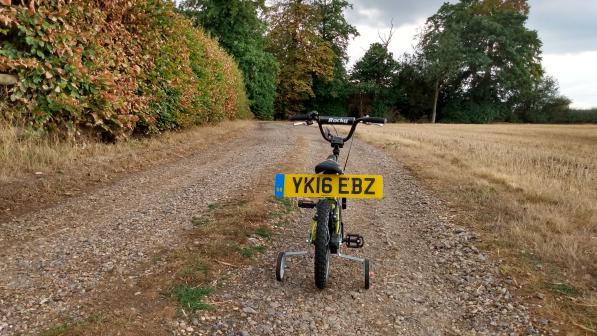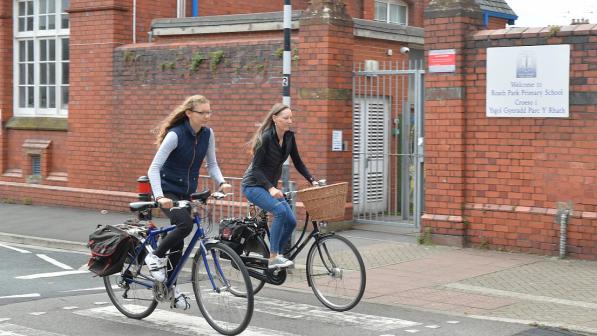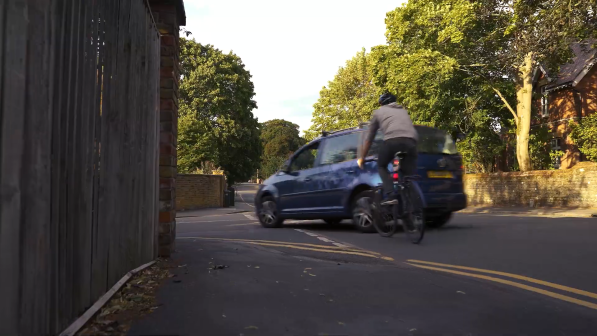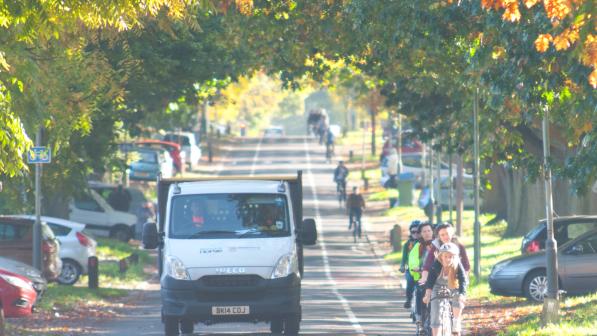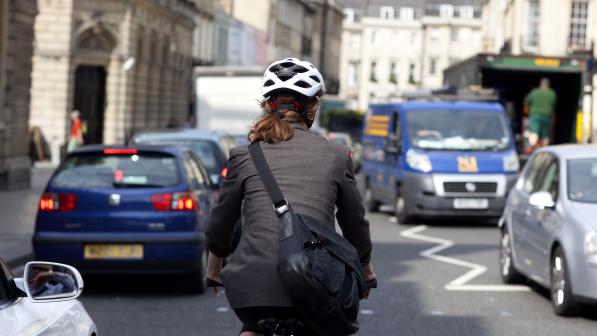Error message
Road safety messaging that misses the target

Back in July, the UK Government published its response following a review of the Highway Code, indicating in the executive summary that every single proposal to make cycling safer saw support from a majority of respondents.
Jump forward to this week, and on Monday, the minister of state for transport, Chris Heaton-Harris confirmed that the government intended to introduce all of the proposed changes which were consulted upon.
How long?
To change The Code, the secretary of state has to lay the proposed alterations before both Houses of Parliament, and then can’t finalise the revisions until 40 days have passed, excluding any period when parliament is dissolved – like Christmas.
With the proposed amendments expected to be tabled imminently, this means that early next year, we should have a new Code which better protects vulnerable road users, with changes including:
- The introduction of the 'Hierarchy of Road Users' or ‘Hierarchy of Responsibility’ recognising that road users who pose greater risks to others ought to have a higher level of responsibility
- Simplification of the rules relating to non-signalised junctions, which will make junctions safer and address ‘left-hook’ collisions
- New rules to tackle dangerous overtaking and ‘close passes’, with a guideline minimum safe passing distance
- The inclusion of the Dutch Reach, to help prevent ‘car-dooring’
What happens next?
If you’re wondering whether changing The Code matters, or want more information on any of the proposals, our frequently asked questions article will hopefully provide some of the answers, but a key question the government needs to answer is what happens next?
Changing The Code is of course important, but the government also needs to make sure that people are aware of those changes, and whilst road safety organisations and charities like Cycling UK can play their part in communicating the changes and what they mean, what’s really needed is a properly funded, well informed and widespread public awareness campaign.
Woefully misguided campaigns
But here’s where things get a bit tricky . Whilst we’re delighted that Government are going to change The Code, the truth is we’ve not always been that impressed by their road safety messaging and awareness campaigns, a classic example being the 2016 THINK cycle safety campaign, which Chris Boardman described at the time as “woefully misguided” and which "sought to make entertainment out of death".
One of the many problems with the film THINK produced for that campaign is that it looked like they were blaming the victim, though to be fair to them, that’s a mistake many others make when producing road safety materials.
Three years ago we made detailed submissions to the government in response to their cycling and walking safety consultation. In addition to our call for changes to The Code (pages 87 – 91), we made various recommendations regarding both cycle safety awareness campaigns and the communication of road safety awareness messages to drivers (pages 35 -45), highlighting both good and bad practice – and I was reminded of all of that last week, when I saw Transport for London’s latest new ‘See their side. See safer road’ film:
Ignoring the hierarchy
If you’ve just watched that film or had already seen it, let me be clear. The concept behind the film, namely seeing things from someone else’s perspective, is great, and I’m sure everyone involved in this film genuinely wanted to encourage more tolerance on the roads. It’s also better than many road safety films I’ve seen.
But I was still dismayed when I watched it, because it’s a film that ignores the fundamental change the new Code introduces: the introduction of the 'Hierarchy of Users' or ‘Hierarchy of Responsibility’, recognising that road users who pose greater risks to others ought to have a higher level of responsibility.
False equivalence
Going back to TfL’s film, the promotional material indicates that it is targeted at all London’s road users. That’s the first mistake.
The recommendations we made to the government in 2018 regarding awareness campaigns reflected the findings of a 2009 study of several successful initiatives targeted at certain behaviour (these included speeding and green travel, as well as issues unrelated to transport).
Most salient is the author's recommendation for accurate targeting, because in the context of road safety awareness campaigns, multi-purpose / multi-targeted campaigns, which try to address perceived problem behaviour among drivers and cyclists alike in the same campaign usually end up creating a false equivalence between different road users.
Fudge
Sadly, we see this all too often in road safety awareness campaigns, with too many targets, typically in a misguided bid to be seen as even-handed and to avoid criticism from one group. It’s this fudge towards a 'share the road' message that blights many awareness campaigns, instead of focussing on risk and the reduction of danger, and it’s completely at odds with the concept of a hierarchy of users or responsibility which is about to be introduced.
If you think I’m being pedantic here and unduly critical, let me take you back to the promotional materials for this film, which talk about a car driver and a cyclist who narrowly escape a collision, and then both realise how their behaviour has affected the other.
OK, the film has been shot to try and avoid showing any obvious error by either the driver or the cyclist, but as the film producers explain, the camera follows a car driver and a cyclist as they travel in parallel along the same road. Describing how they narrowly avoid a collision, we’re then told that both the driver and the cyclist then think about “how close they come to potentially hurting each other and the fear the other must have felt”.
We’re into false equivalence territory again here.
Driver and cyclist both travelling along a straight road. Driver ends up having to slam on the brakes, in circumstances where it’s difficult not to conclude that she hadn’t seen the cyclist, ending up really close to the kerb inches away from the cyclist.
There’s no equivalence in the hurt each could have caused the other. One’s far more vulnerable. One’s in a metal box. That’s the whole hierarchy point.
False assumption of equal responsibility
The voiceover at the end of the film tells us that if we understood how we really make each other feel, our roads would be safer. The problem is that the message isn’t targeted, so we’re left with a film which implies that a cyclist who is cycling along a straight road should think about how he might hurt a car driver, potentially one who’s failed to see him, and that he should think about how his behaviour might have affected someone less vulnerable, who may indeed have made an error when he had not.
I’m sorry, but it’s the type of 'play nicely' fudged messaging that leads to an assumption that everyone is equally responsible on the roads, no matter how vulnerable they are or what risk of harm they present to other roads users. And that’s what the new Code is supposed to be moving away from.
Messaging should reflect the new Code
I’m a huge supporter of TfL’s Vision Zero ambition to eradicate deaths and serious injuries from London’s roads, and I haven’t taken any pleasure in criticising this film, but if the new Code is going to lead to a cultural change on our roads, and improvement in road safety, the messaging in road safety awareness materials needs to be based on better research around who presents the greatest risk, and better targeted.
The lead responsibility for communicating the changes to The Code of course rests with the government, and the Department for Transport’s THINK team. I hope they’ve set aside sufficient budget, over a significant period of time, and are honest about the implications of the changes rather than fudge them in generic 'share the road' messaging.
After all, the changes to The Code have legal implications the day they come in, so the public are entitled to expect that the messaging is accurate, even of they don’t like it, rather than watered down to please everyone.
